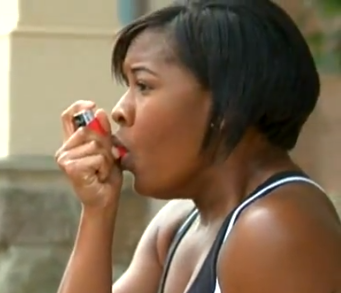Study details link between race, air pollution exposure

That the color of your skin can be an important factor in determining the quality of the environment where you live is not exactly breaking news, but a new study offers eye-opening details about where the racial disparities in exposure to health-damaging air pollution are most dramatic.
Published this week in the scientific journal PLOS ONE, "National Patterns in Environmental Justice and Inequality: Outdoor NO2 Air Pollution in the United States" looks at exposure to nitrogen dioxide or NO2, a pollutant released primarily by gas-powered vehicles and power plants that's linked to asthma and decreased lung function in children, low birth weights, and death from heart and lung disease. The study was conducted by three professors in the University of Minnesota's civil engineering department.
While other studies have found that the South ranks relatively high for environmental inequality, it turned out to be among the regions with the least disparity in NO2 exposure between lower-income people of color and higher-income whites. New York, New England and the Great Lakes region had the greatest disparity.
The state with the greatest difference between the races for NO2 exposure is New York, followed by Pennsylvania, Illinois and Michigan. The only state with no racial difference in exposure was South Dakota, while the states with the least difference were Idaho, Arizona, and South Carolina.
Among the Southern states, Kentucky has the greatest disparity in NO2 exposure between whites and nonwhites, coming in at 13th place nationally. Tennessee is next in 16th place overall and Louisiana at number 18, immediately followed by Georgia, Florida and Virginia.
The study also looked at NO2 exposures in metro areas, finding the greatest disparity among whites and nonwhites in the New York and Philadelphia areas. Among the South's metro areas with no racial differences in NO2 exposure were Jonesboro, Ark., Vero Beach, Fla., Goldsboro, N.C., Brownsville, Texas, and Harrisonburg, Va.
In addition, the researchers found disparities in exposure that were not directly related to race. For example, people living below the poverty line are exposed to higher average NO2 concentrations than those living above it. And among people living in poverty, young children and elderly people face greater exposures than the rest of the population. Nationally, inequality in average NO2 concentration is even greater than inequality in average income, the authors found.
This disparity has important environmental health implications. The authors estimate that reducing nonwhites' NO2 exposure to levels experienced by whites would reduce mortality from the most common type of heart disease by about 7,000 deaths a year.
"Our findings establish a national context for previous work that has documented air pollution environmental injustice and inequality within individual US metropolitan areas and regions," the authors conclude. "Results given here can aid policy-makers in identifying locations with high environmental injustice and inequality."
Tags
Sue Sturgis
Sue is the former editorial director of Facing South and the Institute for Southern Studies.
